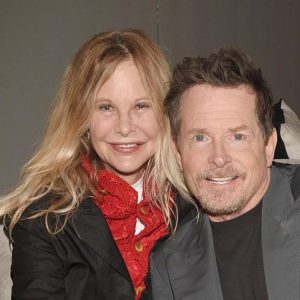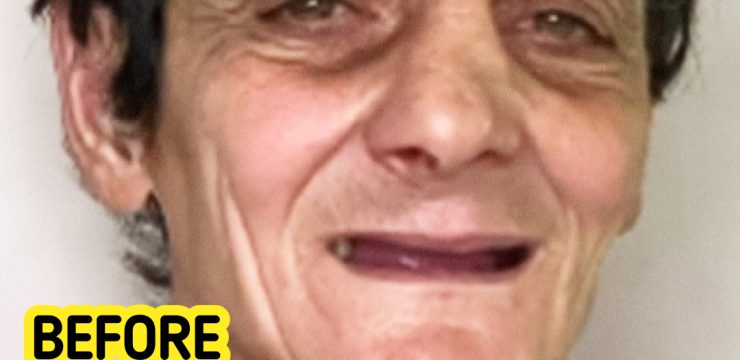Meg Ryan, once hailed as America’s sweetheart, captivated millions with her signature charm, expressive eyes, and radiant smile. With timeless performances in classics like “When Harry Met Sally,” “You’ve Got Mail,” “City of Angels,” and “Kate and Leopold,” she became one of the most beloved actresses of the 1990s and early 2000s. Her on-screen presence brought authenticity, warmth, and a rare combination of humor and vulnerability that made audiences feel an immediate connection. However, recent public appearances have sparked discussions far removed from her acting talent. At 61, Ryan made her first public appearance in six months, and to the shock of many, she appeared almost unrecognizable—a change largely attributed to plastic surgery.

Meg’s career and image have always been closely intertwined. Unlike some of her contemporaries, her appeal wasn’t built on glamour alone but on a girl-next-door quality that felt real and relatable. She was approachable yet enchanting, with an authenticity that felt rare in Hollywood. Her signature look—fluffy blonde hair, twinkling eyes, and that easy smile—became iconic, and for years, fans loved her not only for her performances but also for her seeming resistance to the pressures of Hollywood vanity. But time can be relentless, and the industry’s obsession with youth is difficult to escape.
Like many actresses, Meg Ryan found herself confronting the realities of aging in an industry that idolizes youth. While many fans appreciated her natural beauty and expressive face, Ryan reportedly began turning to cosmetic procedures over the last fifteen years in an effort to preserve her image. Unfortunately, her attempts have been met with mixed reactions—and, at times, harsh criticism. The very industry that often nudges women toward maintaining a youthful appearance is also the first to ridicule them when the results don’t meet public expectations.
Back in 2013, Ryan’s noticeably altered appearance became a topic of widespread conversation. Photos from that period revealed changes that were too dramatic to ignore. Experts and tabloids alike speculated that she had undergone multiple procedures, including extensive use of Botox, dermal fillers, and possibly a rhinoplasty that critics described as ill-fitting for her facial structure. The once vibrant expressiveness that characterized her face now seemed stiff and unnatural, with some even comparing her appearance to a rubber mask. That comparison, while harsh, underscored a public sentiment: something had changed, and not for the better.
Plastic surgery, when done subtly and tastefully, can offer people a refreshed look that enhances their features without distorting them. But as many celebrities have experienced, chasing perfection through cosmetic procedures can sometimes lead to unintended consequences. In Ryan’s case, the initial procedure appeared to erase the very qualities that had made her so relatable and beloved. Rather than softening the effects of aging, it seemed to eliminate the expressions and character lines that had once told the story of her life and career.
Since the backlash in 2013, Ryan has reportedly made multiple efforts to correct or reverse some of the changes brought on by those early procedures. However, undoing the effects of cosmetic enhancements is notoriously challenging. Fillers and Botox can wear off over time, but more permanent alterations, like rhinoplasties and surgical lifts, are much harder to revise. Revision surgeries are not only costly but also come with increased risks and complexities, making the process both emotionally and physically taxing.
In her most recent appearance, Ryan attended a high-profile event in New York City to support her longtime friend, actor and activist Michael J. Fox, at the premiere of his documentary “Still.” The event marked her return to the public eye after a six-month absence, during which time fans and media speculated about her health and whereabouts. Stepping onto the red carpet in support of a cause close to her heart, Ryan drew immediate attention—not just for her presence, but for her appearance, which had once again changed noticeably.
Observers noted that her face appeared tighter, with less mobility around the eyes and mouth—features that are often the first to show signs of surgical enhancement. Her skin, while smooth, lacked the natural elasticity typically seen in healthy aging. While some fans expressed concern, others sympathized, acknowledging the immense pressure celebrities face to maintain a youthful appearance in an unforgiving industry. Social media erupted with commentary, with opinions ranging from admiration for her courage to appear publicly to disappointment over her continued reliance on cosmetic procedures.
It’s worth remembering that aging is a deeply personal journey. For those in the public eye, that journey becomes a spectacle, subjected to relentless scrutiny and judgment. Meg Ryan is no exception. While she chose a career that thrust her into the spotlight, the transition from romantic lead to older actress is one that Hollywood has long struggled to support gracefully. Actresses are often faced with an impossible choice: embrace natural aging and risk being sidelined, or pursue cosmetic enhancement and risk losing their identity.
What makes Ryan’s case especially poignant is the contrast between her earlier self and her current appearance. Her charm had always rested not just in her physical beauty, but in her ability to convey emotion—love, heartbreak, joy, confusion—with just a look. When those facial expressions become limited due to surgical tightening or frozen by Botox, the essence of that relatability can fade. The very thing that made her a star begins to slip away.
Yet it’s important to resist turning Ryan’s story into a cautionary tale. Instead, it serves as a reflection of the broader cultural obsession with youth and the impossible standards placed on women, especially in entertainment. It highlights the double standard that allows men to age naturally while women are scrutinized for every wrinkle and sag. The emotional toll this takes on performers—especially those who built careers on their looks and charm—can be immense.
In private life, Ryan is known to be reclusive and values her privacy. After stepping back from acting in recent years, she has focused more on directing and spending time with family, including her children Jack Quaid, an actor himself, and Daisy True, whom she adopted from China in 2006. Friends describe her as introspective, kind, and fiercely protective of her loved ones. Despite the pressures of fame, she has always tried to stay grounded, prioritizing her personal life over relentless pursuit of career fame.
As Ryan continues her journey, there’s hope that public perception might shift toward greater empathy. After all, she is not alone in grappling with aging in the spotlight. Many actresses have opened up in recent years about the challenges of maintaining both confidence and relevance in an image-driven business. Celebrities like Jane Fonda, Jamie Lee Curtis, and Andie MacDowell have spoken candidly about embracing gray hair, wrinkles, and the wisdom that comes with time. Their openness has sparked broader conversations about redefining beauty and challenging outdated norms.

Perhaps Meg Ryan’s evolving appearance can be seen in that same light—not as a failure, but as part of a broader cultural reckoning with beauty, age, and authenticity. The disappointment some fans feel may come not from judgment, but from a sense of loss—the longing to see the woman who once felt like a reflection of their own lives continue to age naturally and unapologetically.
Still, the choice remains hers alone. No one has the right to dictate how someone should look or age. If cosmetic procedures help Ryan feel more comfortable or confident, that is her prerogative. But the public conversation around her transformation speaks volumes about the way society treats aging, especially in women. It raises questions about what we value, who gets to age on their own terms, and how we respond when someone doesn’t meet our expectations.
Ryan’s legacy in film remains untouched. Her body of work stands as a testament to her talent and charisma, capturing moments of humor, love, and humanity that continue to resonate with audiences. Whether she returns to the screen or chooses a quieter path, her impact is undeniable. The discussion around her recent appearance may eventually fade, but the roles she played—and the joy she brought to countless fans—will endure.

As audiences, perhaps the best we can do is to honor the performers we love by allowing them the space to grow and change—physically, emotionally, and professionally. Meg Ryan has given the world decades of memorable performances, and she deserves the same grace and compassion we would extend to anyone navigating life’s inevitable changes.
In the end, we are all aging. The difference is that most of us don’t have our transitions documented by flashing cameras and viral headlines. Ryan’s public journey through the years—her stardom, her personal choices, and her evolving appearance—reminds us of the importance of empathy, understanding, and the acceptance that beauty doesn’t have to be frozen in time to be real. She may look different now, but her contributions to film and culture remain deeply rooted in the hearts of those who grew up watching her shine.





